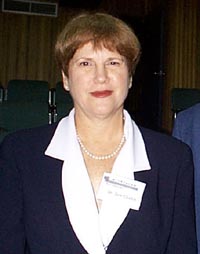 |
In the Middle Ages monastic and cathedral schools and then, in the twelfth century, universities admitted only men for formal education. What they studied was the seven liberal arts (grammar, rhetoric, logic or dialectic, arithmetic, geometry, music, and astronomy), culminating in the study of philosophy and then the Bible as the Word of God. In grammar they learned Latin, the lingua franca of western Europe, and read classical works such as Virgil's Aeneid and Ovid's Metamorphoses. Because the Roman mythology (and ancient culture) in these works was so alien, the magistri or teachers produced written commentaries, an early form of literary criticism. |
| When Christine de Pizan (1364-1430?) came to read some of these commentaries--she was the daughter of the court physician and astrologer in the court of Charles V in France, having been born in Venice--she rewrote the essentially patriarchal tradition in two major works, the Epistre Othea a Hector (Letter of Othea to Hector) (1399?) and the Livre de la Cite' des Dames (1405). She recast Augustine's City of God to note that the decline of nations had taken place because of the errors of male leaders (for example, the fall of Troy documented in the Aeneid) and she recast the importance for civilization of female deities, artists, inventors, queens, heads of state, virtuous women, and saints. In her richly decorated manuscripts of the Epistre Othea, her most popular work, the illustrations of some of her "remythisizations" of women clearly show her early protofeminism. | |